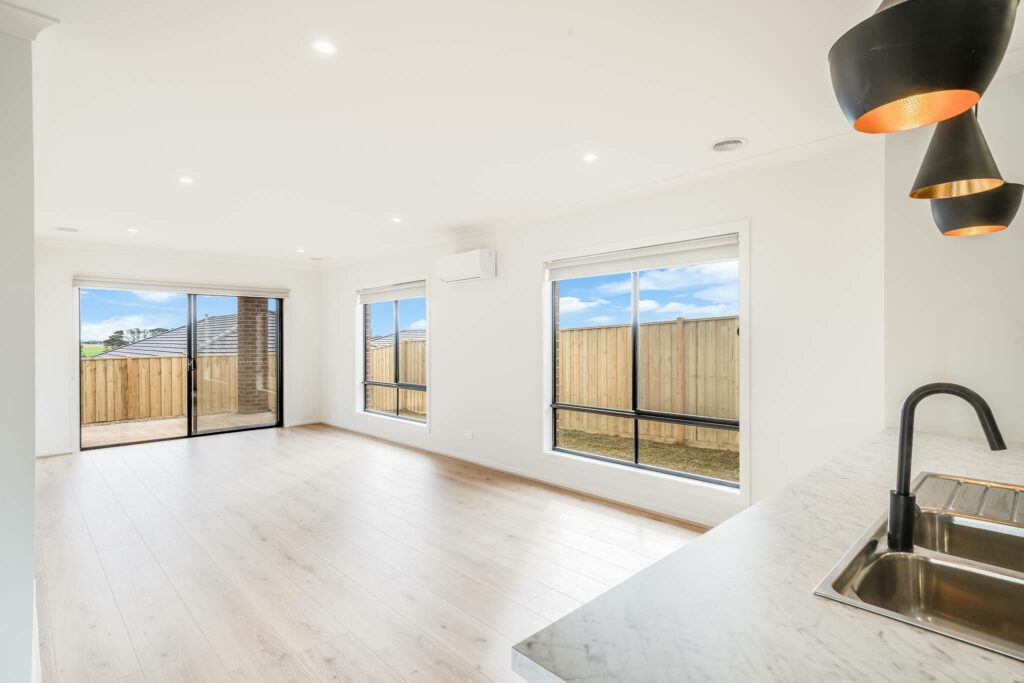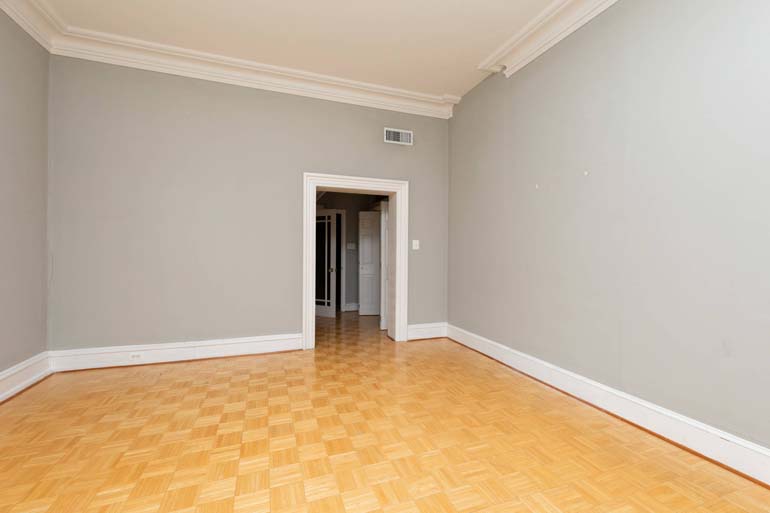Are you wondering if virtual staging is legal and if there’s anything you need to do to avoid a possible misrepresentation lawsuit?
Then, this article is for you!
Virtual staging is a powerful visualization tool that can show the potential of a property and get people interested and in the door. If used correctly, it can help you sell a home faster for above the asking price.
In this post, we’ll share whether virtual staging is legal and how to properly disclose digitally altered real estate photography. We’ll also cover how to stay compliant with the MLS.
Before we take the deep dive, let’s first take a look at what virtual staging in real estate is.
What Is Virtual Staging in Real Estate?
Virtual staging is a process where professional designers take a photo of a vacant or outdated room and add digital furniture and decor to the space. The goal is to make a perfect first impression on prospective buyers or renters.


In other words, virtual staging is simply the use of technology to make a listing stand out. And at the same time, capture buyers’ attention with a presentation of all its possibilities.
Potential buyers can imagine themselves living in the home and see how it can look decluttered, redecorated, or even renovated.
This powerful marketing and visualization tool is popular amongst real estate professionals and has some significant benefits:
- For starters, it costs a fraction of the cost of traditional home staging
- And you don’t need to hire a stager to actually move furniture
- Nor do you need to rent or buy furniture and decor
- Besides, virtual staging is way faster than regular home staging and can be done in under 48 hours
- Best yet, you can cater to any market with the use of different design styles and furniture
For more information, you can check our blog post on 10 benefits of virtual staging for real estate agents.
Is Virtual Staging Legal?
Some people ask, “Is virtual staging legal?” “Is it ethical?” “Will buyers visiting the property, feel deceived?”
The answer to these questions is that virtual staging is not only legal, but it is perfectly ethical. As long as you disclose that the images are virtually staged, you won’t misled buyers.
Today, virtually staged real estate photos look incredibly photo-realistic. While this is good from a marketing perspective, people may not realize that the space has been digitally altered.
As a result, presenting before and after photos and labeling them as “virtually staged” is a good best practice.


This digital counterpart of traditional home staging has many benefits. For example, consider this…
…when a potential buyer is attending a physical showing, physically staged furniture may have been placed to cover stains and scratches.
In contrast to staged homes, vacant homes have nothing to hide and potential flaws are easily discovered. At the same time, digitally staged photos allows buyers to see how the home could look when presented in its best possible light.
With this in mind, the purpose of virtual staging isn’t to mislead or trick buyers. But to make them imagine updates and remodeling options, as well as show them design and decorating possibilities.
How to Disclose Virtually Staged Images
When altering real estate photos digitally, you should clearly label and openly disclose it as virtually staged to avoid a misrepresentation lawsuit.
This doesn’t only protect you against legal issues, but it also helps buyers understand that the home may not be properly furnished when they get there.
Take these precautions:
1. Disclose All Virtual Staging
Simply, labeling your images as “virtual staging” and adding clear before and after photos of the space will prevent potential buyers from feeling deceived when they see the home in person.


2. Add a Disclosure Text in Your Marketing Copy
If you can’t label your images, you can add a disclosure text that lets people know that your images are digitally altered.
Here’s an example of a disclaimer you can add to your marketing copy:
“Some images have been virtually staged to better showcase the true potential of rooms and spaces in the home.”
3. Don’t Cover Up Flaws or Remove Property Structures
It may be tempting to remove the water stain in the bathroom ceiling. Or, other flaws in the home, but this could lead to claims of misrepresentation.
Instead, virtually staged images should show how the space could look and how a buyer could realistically change the property.
For example, it’s prohibited to remove certain items or neighboring property structures from your images. Or, add fixed features that do not exist, such as a fireplace, windows, or other property additions.
Fast & Affordable
Virtual Staging Service
Interiors. Landscapes. Commercial. Virtually transform any space.
4. Get Legal Advice
Before using virtual staging to market your listing, you may want to get legal advice on specific changes you can make. As well as how to properly disclose that your photos have been digitally staged.
That said, let’s now look at how to make sure your virtually staged images comply with the MLS.
MLS-Compliant Virtual Staging
Like for any property website or marketing platform, any virtually staged photo added to the MLS should be clearly labeled as “virtually staged.”


However, keep in mind that while most multiple listing services allow agents to add property photos with labels on them, some don’t. So you should always check with your local MLS to see whether this practice complies with its policies.
If you can’t label or mark the photos, you can try the following:
- Disclosing that the photos are virtually staged somewhere in your marketing copy
- Checking to see if your MLS has captioning ability beneath each photo
- Mentioning your use of virtual staging in all your marketing materials with a disclaimer
In conclusion, disclosing the use of virtual staging is the most honest and transparent way to present your photos and to keep you compliant with MLS rules.
Sell Your Listing Faster With PhotoUp’s Virtual Staging


As a result of the increased use of technology, it is safe to say that both agents, sellers, and buyers are embracing the use of virtual staging to showcase a property’s potential.
And as long as you disclose that your listing photos are virtually staged, you’ll avoid misrepresentation.
Remember, the primary purpose of any real estate media is to convey an accurate and compelling visual representation of the property to accelerate the sale.
And here’s where PhotoUp can help!
Fast & Affordable
Virtual Staging Service
Interiors. Landscapes. Commercial. Virtually transform any space.
Quick and Effortless Virtual Staging
PhotoUp makes virtual staging quick, effortless and affordable. Our full range of virtually staging services include:
- Virtually staging for vacant or furnished rooms
- Redesigns and full makeovers
- Color changes for walls, furnishings, and flooring
- Digital decluttering, repairs, and updates
- Virtual landscaping
- And more.
Best of all, you can choose between dozens of furnishing and decor style options to be able to cater to any market, from residential to luxury listings.
Check out our virtual staging image uploader tutorial to see how easy it is to get started:
As simple as that!
Sign up for a free PhotoUp account, and let our expert designers make your listing photos look captivating, modern, and fresh.
We hope this blog post helped put your mind at ease knowing that virtual staging is legal. And at the same time, provided you with the right tools to help disclose digitally altered images.
If you enjoyed reading this post, you may also want to check out the following resources:






